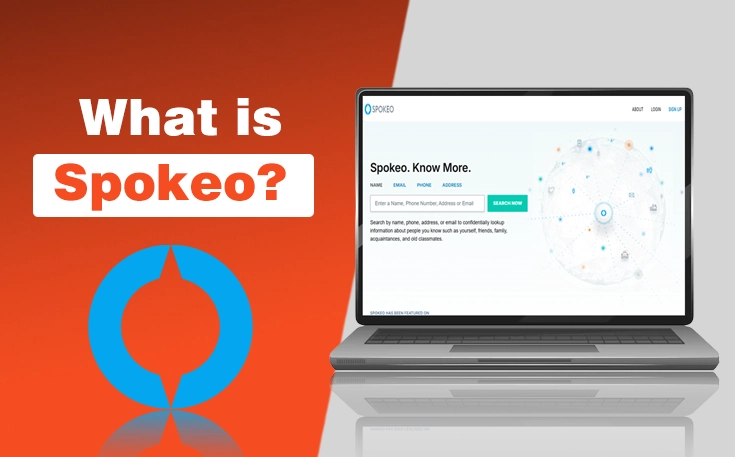When you are scraping thousands or even millions of web pages daily, those small delays between request and response start to stack up. At first glance, 200 milliseconds might not seem like a big deal. But across a massive scraping operation, that delay can quietly become one of your biggest inefficiencies.
In this blog post, I want to take you through why latency is more than just a nuisance, how it costs you time and money, and the practical steps you can take to bring it down. I will also talk about how the best datacentre proxies can drastically improve performance.
Why Latency is More Than Just a Technical Detail?
Latency is the gap between when your system sends an HTTP request and when it receives a response. In web scraping, it includes multiple phases:
- DNS resolution
- TCP handshake
- TLS negotiation
- Server response time
- Data transfer speed
You might think 200 milliseconds is nothing, but here is the math:
- 200 ms x 500,000 requests per day = 100,000 seconds = 27.8 hours lost daily
That means you are losing more than a full day’s worth of scraping every single day. And that adds up to real costs, whether it is in server time, bandwidth bills, or even missed data windows.
Real World Case Study – Pricing Intelligence
Let me share a quick example. A mid-sized e-commerce company scraped competitor prices across 10 retail websites every hour. Their unoptimized scraping took 45 seconds per site. That delay was not just slowing things down, it was hurting decision-making.
Challenges Faced:
- Price insights were delayed
- Sudden traffic spikes triggered rate limiting
- Cloud compute costs ballooned
After optimizing for latency, they reduced request time to just 15 seconds per site. Over 24 hours, that saved them 2 hours daily and cut cloud compute costs by 15%. It wasn’t just faster. It was a smarter business.
The Cost of Latency at Scale
Once you are dealing with large-scale scraping, like news sites, social media feeds, or ecommerce APIs, inefficiencies don’t just add up. They compound.
Every delay slows down downstream analytics, pushes up server bills, and risks data becoming stale before it’s even processed.
How to Minimize Latency? Best Practices That Work
If you are serious about scraping at scale, here is how you can shrink those delays:
1. Use the Best Datacentre Proxies
High-performance datacentre proxies reduce routing delays and speed up DNS lookups. The right proxies:
- Route requests from optimal geographical regions
- Maintain stable and persistent connections
- Prevent throttling by using clean IP pools
The best datacentre proxies come with smart routing and high-speed uplinks. Look for providers that integrate easily with your scraper and support HTTP keep alive.
2. Enable HTTP Keep-Alive
Reusing the same TCP connection saves you from repeatedly setting up handshakes. It slashes connection overhead and speeds up each request.
3. Implement DNS Caching
Caching DNS results eliminates the need for repeated DNS lookups. Configure your scraper or system to store results just long enough to stay fresh but avoid lookup delays.
4. Optimize for Request Concurrency
Instead of sending one request after another, batch them together. Just make sure you:
- Don’t overwhelm the target server
- Respect rate limits
- Add randomized delays to avoid getting blocked
5. Compress and Minimize Data
Use headers like Accept-Encoding: gzip to reduce payload size. Also, only request the fields you actually need. Smaller responses will result in faster transfers.
6. Use Asynchronous I/O
Modern frameworks like aiohttp or httpx in Python let you handle multiple requests in parallel without blocking your system. Async scraping makes better use of your resources and cuts down latency.
7. Choose Fast Python Libraries
Go with lightweight and performance optimized libraries. For Python, httpx and aiohttp are miles ahead of older and slower clients.
Case Study – News Aggregator Startup
A startup was scraping hundreds of news sites every 15 minutes. Initially, each cycle took 10 minutes and often lagged behind real-time news updates.
What They Did:
- Switched to async I/O
- Enabled connection pooling
- Added DNS caching
- Used best datacentre proxies based on site locations
Result:
- Cycle time dropped to 4.5 minutes
- Latency per request fell from 180 ms to 70 ms
- Server cost dropped by 22%
- Content availability improved dramatically
Integrating SEO Principles and Latency Awareness
If you are building scraping tools or running any system that relies on delivering real-time content, latency is not just a backend issue, it affects your SEO, your user trust, and even your business costs. You might not think scraping performance and search engine optimization go hand in hand, but in reality, they align more closely than most developers realize.
Here is how it all ties together.
1. Slow Content Results in Lower Search Rankings
When your user interface (UI) is slow to load or populate with updated data, users notice and so do search engines. A sluggish page can hurt your bounce rate, decrease user satisfaction, and ultimately harm your visibility in search results.
Google rewards sites that:
- Load quickly
- Deliver up-to-date information
- Maintain consistent performance across regions
That’s exactly why scraping latency needs to be part of your SEO conversation.
Why Speed and Trust Go Hand in Hand?
Let’s say you are scraping stock prices, product listings, or breaking news. Every second matters. If your data is delayed due to poor latency, your published content will be out of sync, and users will stop trusting it.
Speed translates into:
- Fresh content that search engines favor
- Trust signals for both crawlers and users
- Better analytics from accurate, real-time data
- Cost savings that can be reinvested in quality infrastructure or content
Every millisecond saved is a gain in credibility, efficiency, and SEO performance.
Smart Keyword Integration and Flow
If you want your scraping-related content to rank well, your keywords should be placed naturally and thoughtfully. Here are some of the most effective ones to use in your documentation, blog posts, or case studies:
- Best datacentre proxies
- Low latency web scraping
- High-performance proxy
- HTTP keep-alive optimization
- DNS cache scraping setup
Example of natural integration:
“By integrating the best datacentre proxies, the startup ensured low-latency routing and minimized DNS lookup delays across all regions.”
Pro Tip: Never keyword stuff. Use these terms organically, in context.
Case Study – E Commerce Intelligence at Scale
A large international retailer was scraping millions of products across multiple competitor sites daily. But they were facing serious performance issues:
- Slow scraping cycles that took over 4 hours
- Delayed price updates that became irrelevant
- Frequent CAPTCHA triggers and rate-limiting
They introduced several smart improvements:
- Distributed scraping systems with proxy rotation
- Real-time latency monitoring
- Alerts that triggered when latency crossed defined thresholds
Results:
- Latency dropped from 250 ms to 120 ms per request
- Total scraping cycle time reduced to under 90 minutes
- Server compute time decreased by 30%
- Their pricing analysis became timely, dynamic, and more competitive
It is a perfect example of how latency optimization directly impacts business outcomes.
How to Monitor and Measure Latency?
If you don’t measure it, you can’t improve it. Here are the key metrics to monitor across your scraping pipeline:
- Average latency per request
- Time to first byte (TTFB)
- P50, P95, and P99 latency percentiles
- Total request volume
- End-to-end job duration (scraping cycle completion time)
Using lightweight reporting tools or custom dashboards, you can visualize patterns across:
- Proxy providers
- Geographic locations
- Target websites
- Request types
This data helps you detect faulty or overloaded proxies, regional slowdowns, network congestions, and code inefficiencies.
Final Thoughts – Every Millisecond Counts
Let’s not pretend latency is just a “nice to have.” In high-scale web scraping, latency is a currency. Every millisecond lost compounds into hours of waste, delayed insights, stale content, and missed opportunities.
When you combine best datacentre proxies, smart caching, async programming, and continuous latency monitoring, you are not just scraping faster. You are delivering data better. And that’s what separates average systems from truly great ones.
People Also Ask
Q1: What are datacentre proxies, and how do I choose the best ones?
Datacentre proxies are high-speed servers that route your web scraping requests. Choose providers with fast network speeds, low failure rates, global server locations, and solid integration with your scraping stack.
Q2: Can I reduce latency without using proxies?
Yes, to an extent. Techniques like DNS caching, HTTP keep-alive, and deploying your scrapers near the target server can significantly reduce latency even without proxies. But proxies give you added flexibility and performance at scale.
Q3: How often should I monitor latency?
Constantly. You should log latency on every request and set alerts if P95 or P99 latency exceeds your thresholds. This helps you catch slowdowns early and take action before it affects performance.
Q4: Will reducing latency improve my SEO?
Indirectly, yes. Faster scraping means your content updates more quickly, which improves freshness in search indexing. It also supports better user experience and crawl efficiency, both of which influence SEO rankings.
Need custom app with amazing features?
Get a Quote




